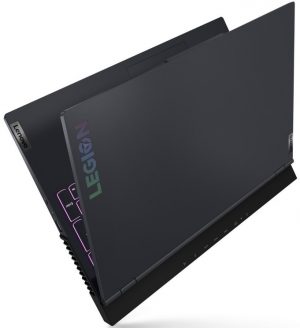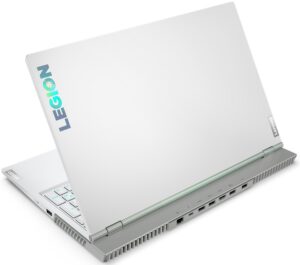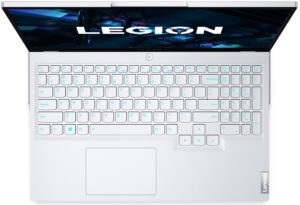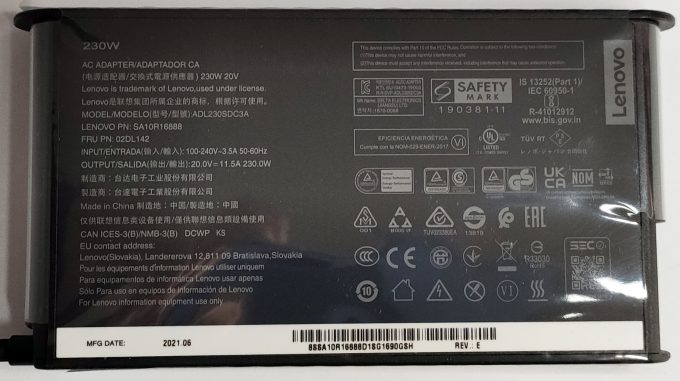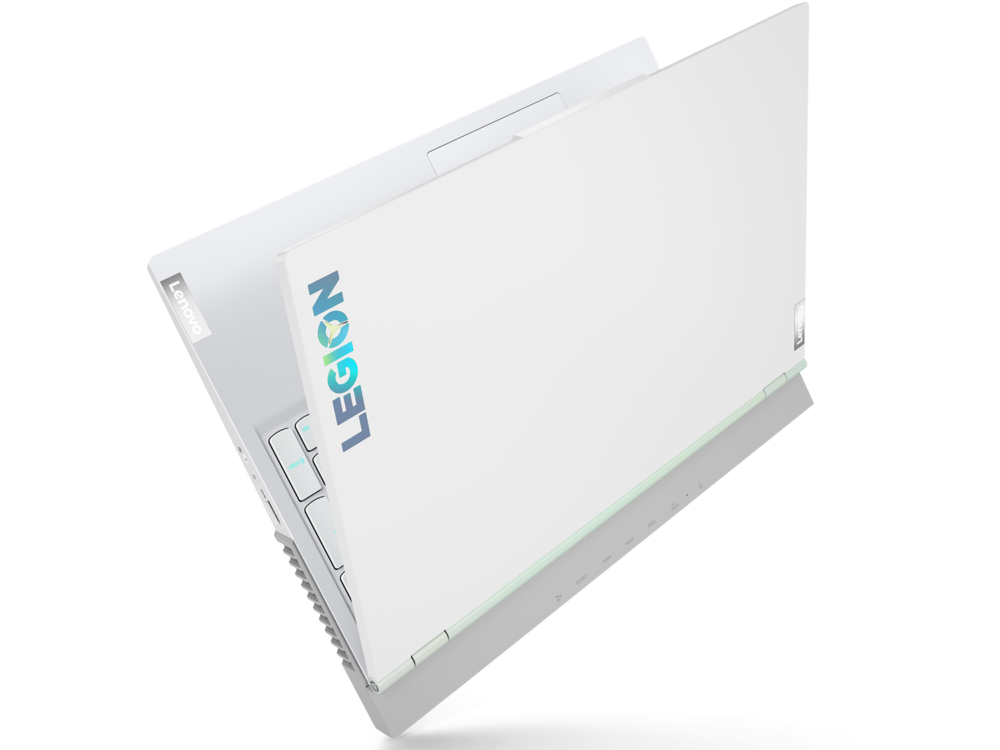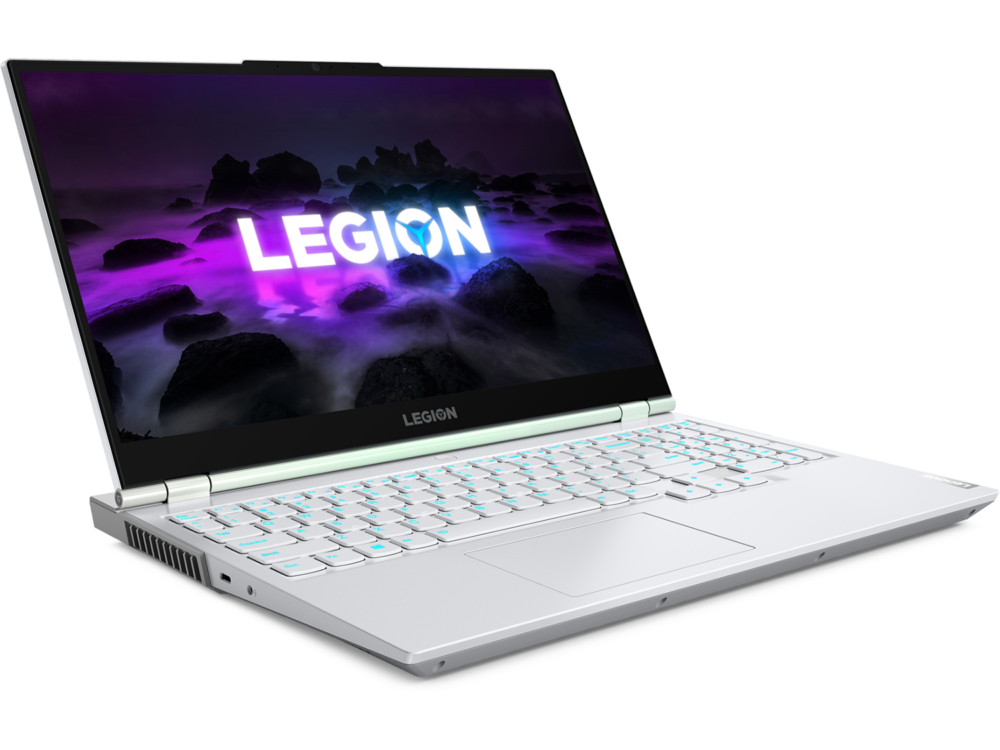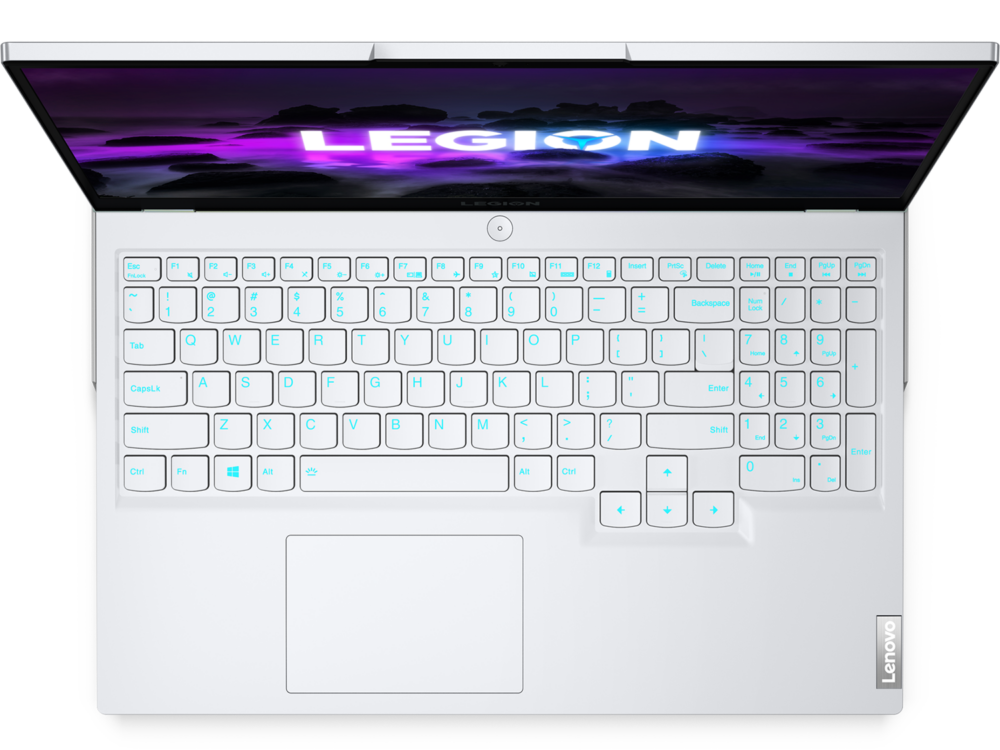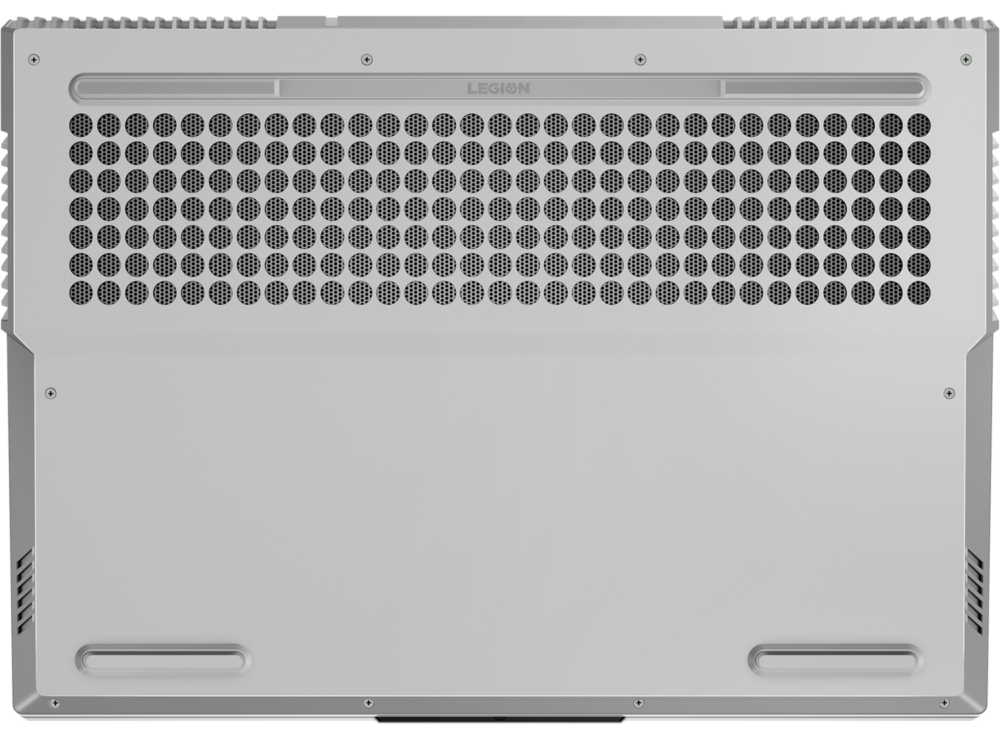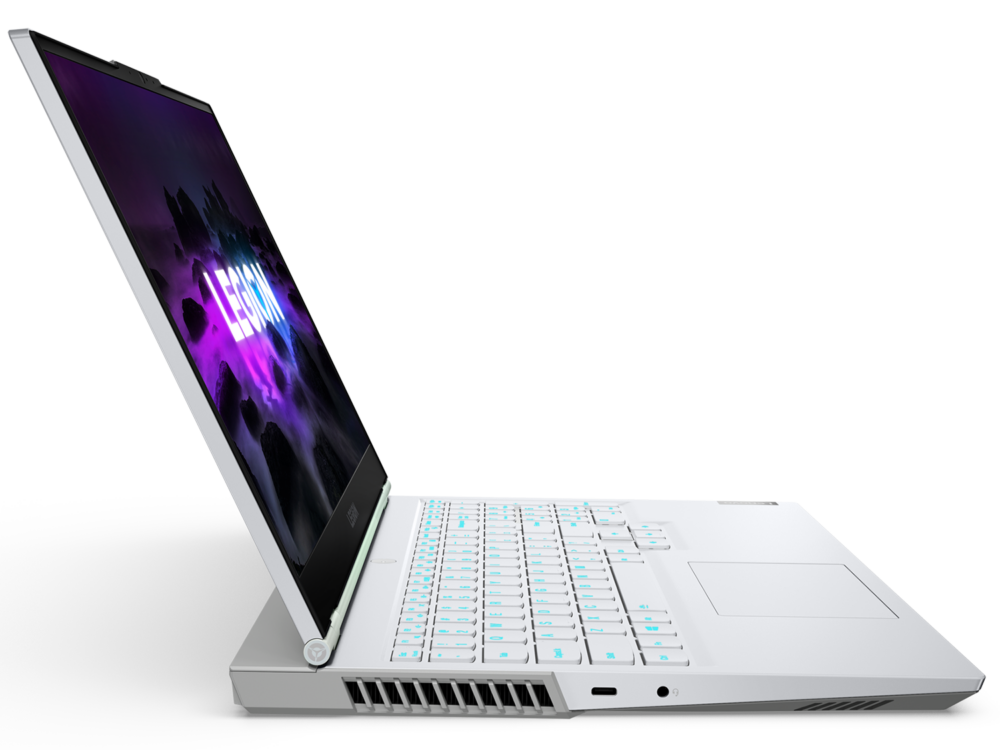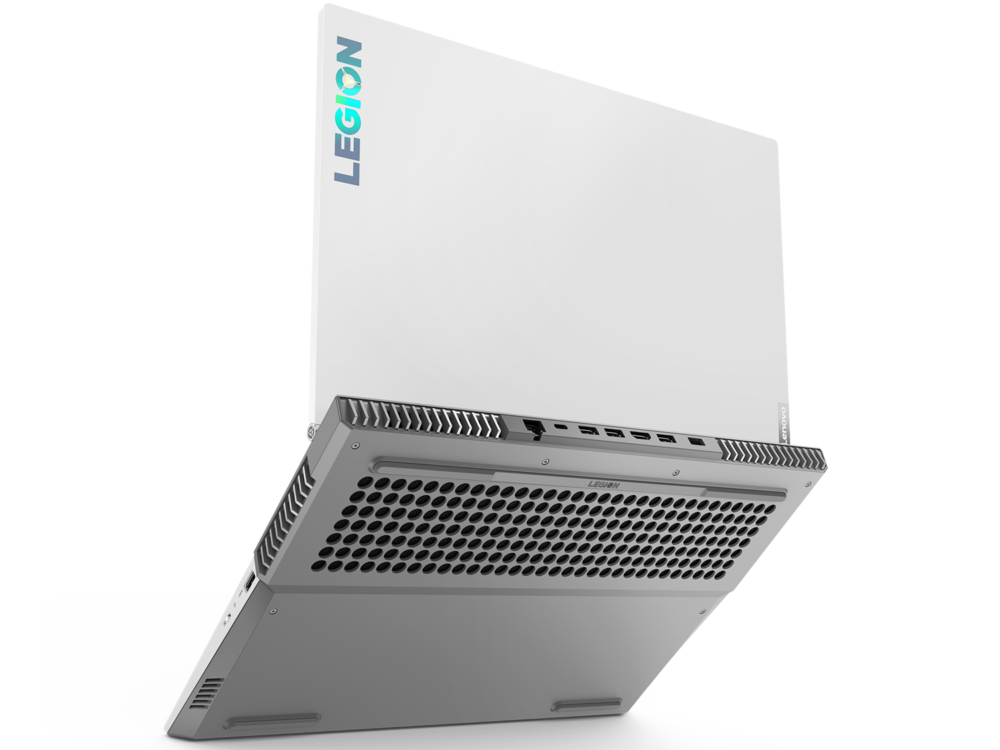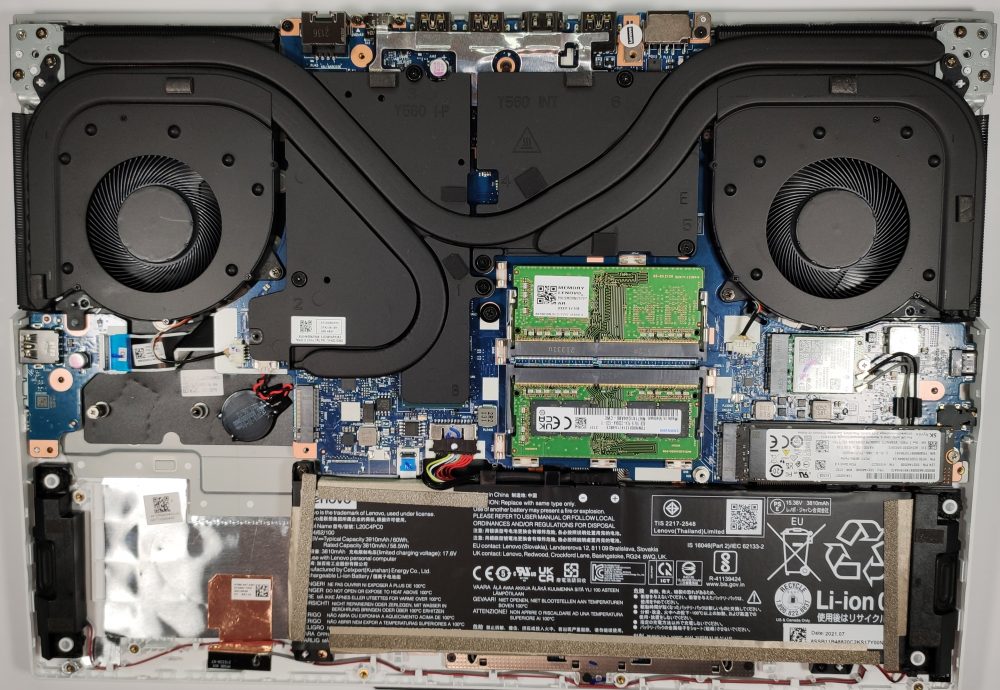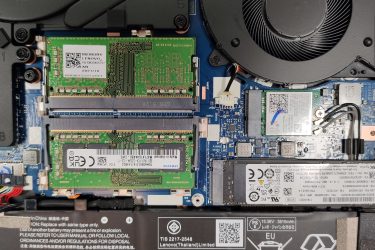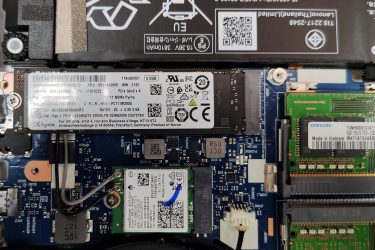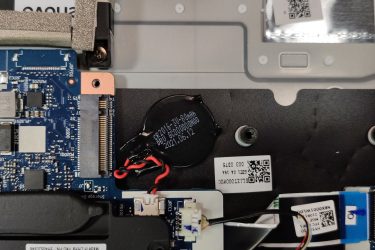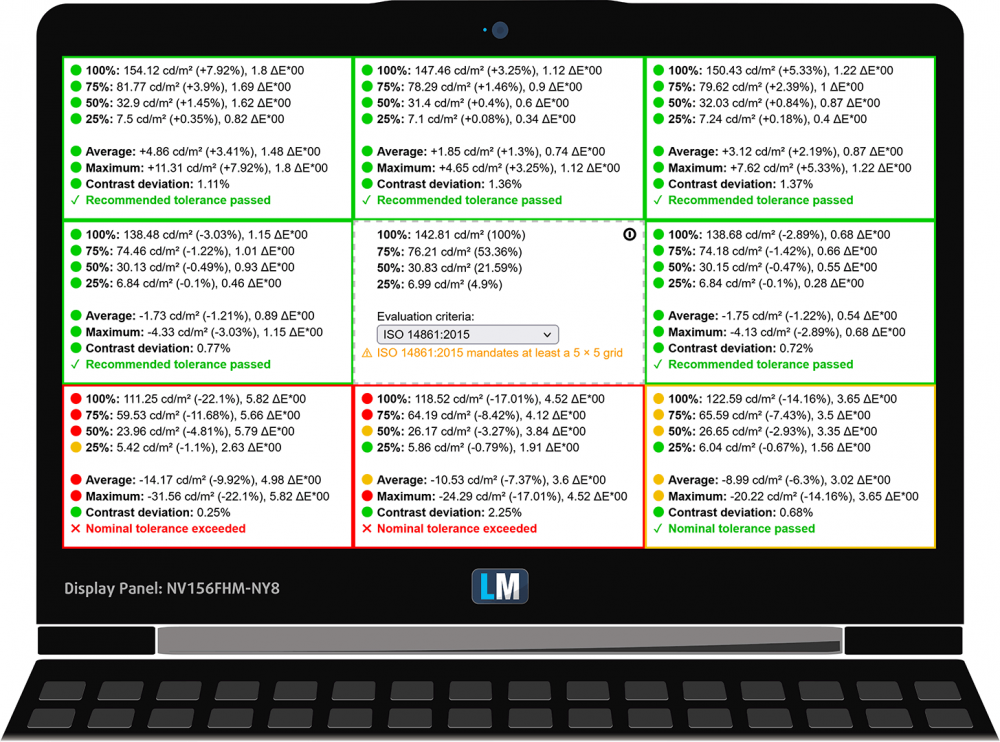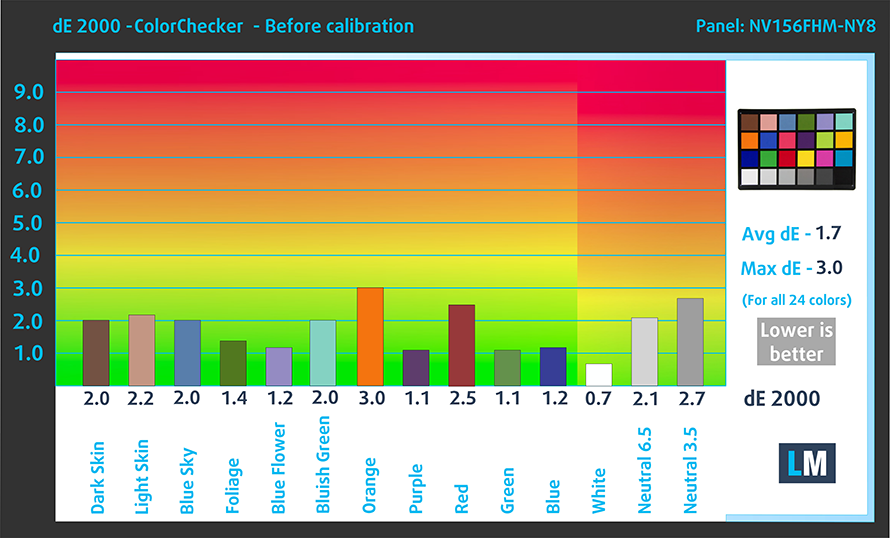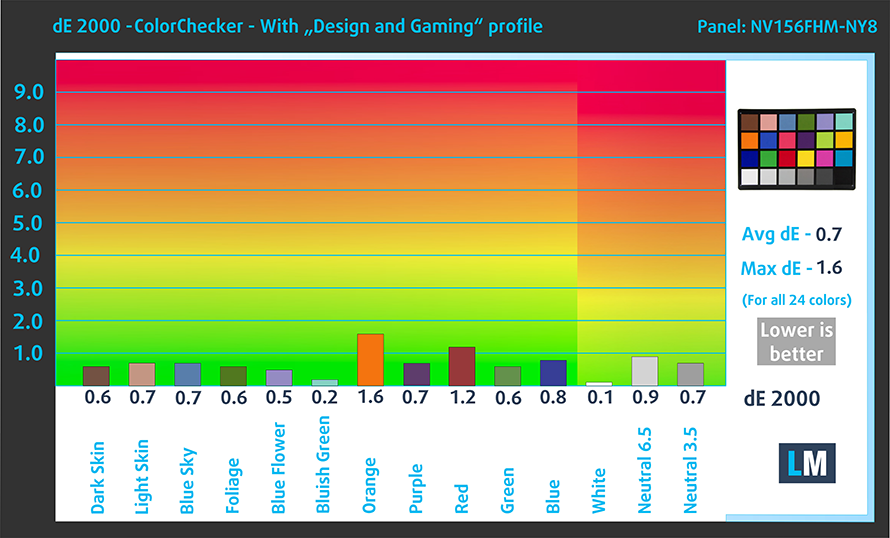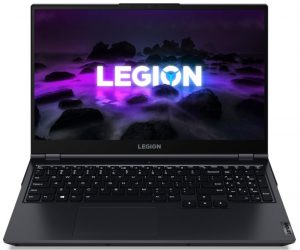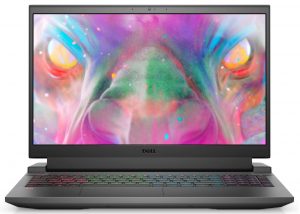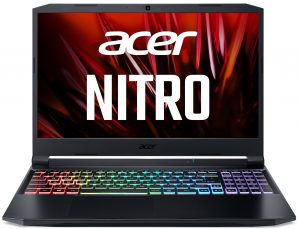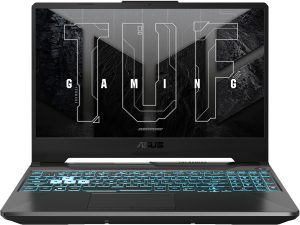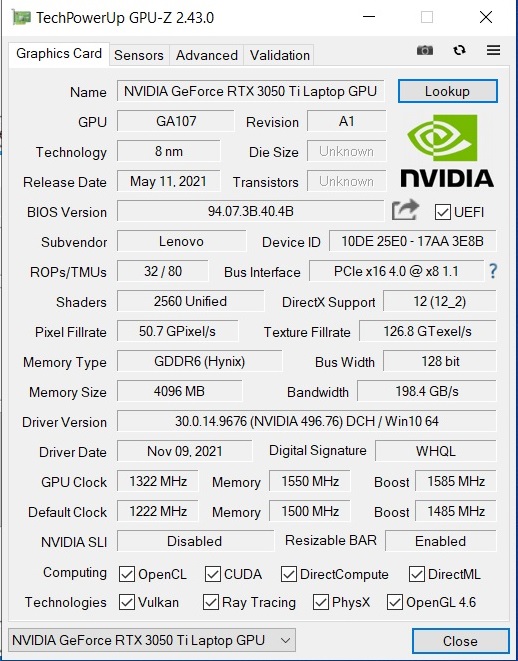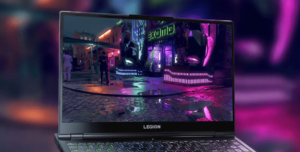Lenovo Legion 5 (15″ Intel, 2021) review – great allrounder for gaming with decent price tag
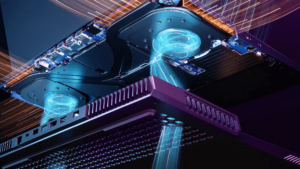 As we’ve concluded in one of our reviews, the Lenovo Legion 5 (15″ AMD, 2021) is a great gaming device that has only a few disadvantages. In this article, we’re going to inspect the performance of the Intel sibling – the Lenovo Legion 5 (15″ Intel, 2021). Both are based on the same chassis, have similar display options, and have identical TGPs of the GPUs.
As we’ve concluded in one of our reviews, the Lenovo Legion 5 (15″ AMD, 2021) is a great gaming device that has only a few disadvantages. In this article, we’re going to inspect the performance of the Intel sibling – the Lenovo Legion 5 (15″ Intel, 2021). Both are based on the same chassis, have similar display options, and have identical TGPs of the GPUs.
The main difference here is the CPU platform. Expectedly, the Intel variants are equipped with Tiger Lake H45 processors. These chips are much better offerings compared to their predecessors from the Comet-Lake H platform that saw numerous refreshes, and the CPUs were hot and power-hungry (at least in most cases). Well, the Tiger Lake H45 chips aren’t efficient as the 7nm AMD Zen 3 counterparts but they bring good performance to the table and they are a big step in the right direction than the previous-gen CPUs.
The Lenovo Legion 5 (15″ Intel, 2021) isn’t a Pro variant but the GPUs still have the same high TGPs which positively affects the overall gaming performance. Unfortunately, the non-Pro devices come with a plastic build but the good news is the device still feels like a tank while holding it in your hands.
At first glance, the whole series look like a complete gaming package – it brings fast Intel Tiger Lake H45 processors, GPUs with hefty TGPs, there is a MUX switch, and the build quality is just fine despite the plastic chassis. It seems that Lenovo Legion 5 (15″ Intel, 2021) can give the more expensive Pro devices a run for their money. Let’s continue and we’ll see if that is true.
You can check the prices and configurations in our Specs System: https://laptopmedia.com/series/lenovo-legion-5i-15-2021/
Contents
Specs Sheet
- HDD/SSD
- up to 2000GB SSD
- M.2 Slot
- 2x M.2 NVMe slots See photo
- RAM
- up to 64GB
- OS
- Windows 11 Home, No OS, Windows 10 Home
- Battery
- 60Wh
- Body material
- Plastic / Polycarbonate
- Dimensions
- 363.06 x 259.61 x 23.57 - 26.10 mm (14.29" x 10.22" x 0.93")
- Weight
- 2.40 kg (5.3 lbs)
- Ports and connectivity
- 1x USB Type-A
- 3.2 Gen 1 (5 Gbps), Sleep and Charge
- 3x USB Type-A
- 3.2 Gen 1 (5 Gbps)
- 1x USB Type-C
- Thunderbolt 4, DisplayPort
- 1x USB Type-C
- Thunderbolt 4, Power Delivery (PD), DisplayPort
- HDMI
- 2.1
- Card reader
- Ethernet LAN
- 10, 100, 1000 Mbit/s
- Wi-Fi
- 802.11ax
- Bluetooth
- 5.1
- Audio jack
- 3.5mm Combo Jack
- Features
- Fingerprint reader
- Web camera
- HD
- Backlit keyboard
- Microphone
- Dual Array Microphone
- Speakers
- 2x 2W, Nahimic 3D Audio
- Optical drive
- Security Lock slot
All Lenovo Legion 5 / 5i (15″ Intel, 2021) configurations
What’s in the box?
In the box, you’ll find some usual things like the laptop itself, manuals, and a huge 230W power adapter (the more powerful machines have a 300W solution). In our case, the latter looks like overkill for a 6-core CPU and GeForce RTX 3050 Ti – the adapter is bulky and heavy.
Design and construction
The Legion 5 (15″ Intel, 2021) looks just like its AMD sibling. This means it has a plastic build but it feels solid (maybe the best all-plastic device that we have tested up to date in terms of body rigidity) and we have a profile thickness of 23.57-26.10mm (slightly thicker compared to the AMD version). The laptop is available in two color options – Phantom Blue and Stingray White.
The lid can be opened with a single hand and the whole process is really smooth. There are some flexes but that is normal for a plastic lid. The HD camera is orthodoxly placed and the bezels around the display are thin except for the “chin”.
The keyboard is a solid unit. It comes in three variants – White, Blue (for the Stingray White machine only), and there is an optional 4-zone RGB backlight version. Also, the key travel feels nice, and the feedback is clicky. The presence of a NumberPad is good and we really like the big Arrow keys that have a lot of free space around them. The base can sustain harsh typing but there are some slight bends (if you press these zones intentionally) between the “Space” key and the Touchpad, and in the area below the Arrow keys.
The Mylar-surfaced touchpad is a good complement to the keyboard and the fast display. Thanks to its surface, the touchpad feels smooth and accurate. The unit lacks dedicated buttons but that makes it looks neat.
The bottom plate houses the cutouts for the speakers and a big ventilation grille. The hot air is being pushed through four vents – two of them are placed on the back of the laptop, and the other two are side positioned.
Ports
The I/O is rich in ports and most of them are placed on the back of the notebook which contributes to better cable management. The left side has a USB Type-C 3.2 (Gen. 1) port, and an audio jack. The right side offers a USB Type-A 3.2 (Gen. 1) port and an E-camera shutter switch. The backside is the main event when it comes to ports – we can spot an RJ-45 connector a Thunderbolt 4 (Type-C) port, two USB Type-A 3.2 (Gen. 1) ports, an HDMI 2.1 connector, one more USB Type-A 3.2 (Gen. 1) port, and a power connector.
Disassembly, upgrade options, and maintenance
If you want to open the laptop, you have to undo 10 Phillips-head screws and after that, you can remove the bottom plate with a plastic pry tool.
There are two 4-cell battery variants – 60Wh and 80Wh units and both support Rapid Charge Pro.
Upgradability-wise, this device offers a lot of bang for its money. We have two SODIMM slots for up to 32GB of DDR4-3200MHz RAM. For storage, there are two M.2 PCIe x4 drive slots.
The cooling solution looks massive and it comes with two cooling fans, two big cooling plates, and three heat pipes. One pipe is shared between the processor and the video card and the other two are solely dedicated to the CPU and the GPU.
Display quality
Lenovo Legion 5 (15″ Intel, 2021) in the configuration we tested has a Full HD 165Hz IPS panel with a model number BOE NV156FHM-NY8 (BOE0998). Its diagonal is 15.6″ (39.62 cm), and the resolution 1920 х 1080 pixels. The screen ratio is 16:9, and we are looking at a pixel density of – 142 ppi, and a pitch of 0.18 х 0.18 mm. The screen turns into Retina when viewed at distance equal to or greater than 60cm (24″) (from this distance one’s eye stops differentiating the separate pixels, and it is normal for looking at a laptop).
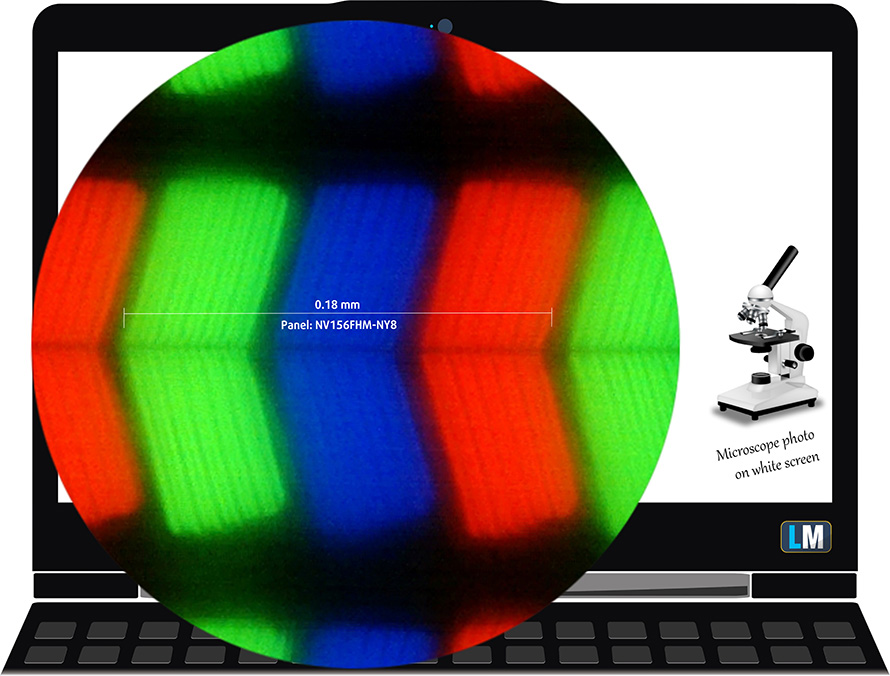
Viewing angles are excellent. We offer images at 45° to evaluate image quality.

Also, a video with locked focus and exposure.
We measured a maximum brightness of 279 nits in the middle of the screen and 266 nits as an average for the whole area, with a maximum deviation of 23% (in the bottom left corner). The Correlated Color Temperature on a white screen is 6580K – almost matching the optimal for the sRGB standard of 6500K.
In the illustration below you can see how the display performs from a uniformity perspective. In other words, the leakage of light from the light source.
Values of dE2000 over 4.0 should not occur, and this parameter is one of the first you should check if you intend to use the laptop for color-sensitive work. The contrast ratio is good – 1190:1.
To make sure we are on the same page, we would like to give you a little introduction to the sRGB color gamut and the Adobe RGB. To start, there’s the CIE 1976 Uniform Chromaticity Diagram that represents the visible specter of colors by the human eye, giving you a better perception of the color gamut coverage and the color accuracy.
Inside the black triangle, you will see the standard color gamut (sRGB) that is being used by millions of people on HDTV and on the web. As for the Adobe RGB, this is used in professional cameras, monitors, etc for printing. Basically, colors inside the black triangle are used by everyone and this is the essential part of the color quality and color accuracy of a mainstream notebook.
Still, we’ve included other color spaces like the famous DCI-P3 standard used by movie studios, as well as the digital UHD Rec.2020 standard. Rec.2020, however, is still a thing of the future and it’s difficult for today’s displays to cover that well. We’ve also included the so-called Michael Pointer gamut, or Pointer’s gamut, which represents the colors that naturally occur around us every day.
The yellow dotted line shows Lenovo Legion 5 (15″ Intel, 2021)’s color gamut coverage.
Its display covers 97% of the colors of the sRGB/ITU-R BT.709 (web/HDTV standard) in CIE1976.
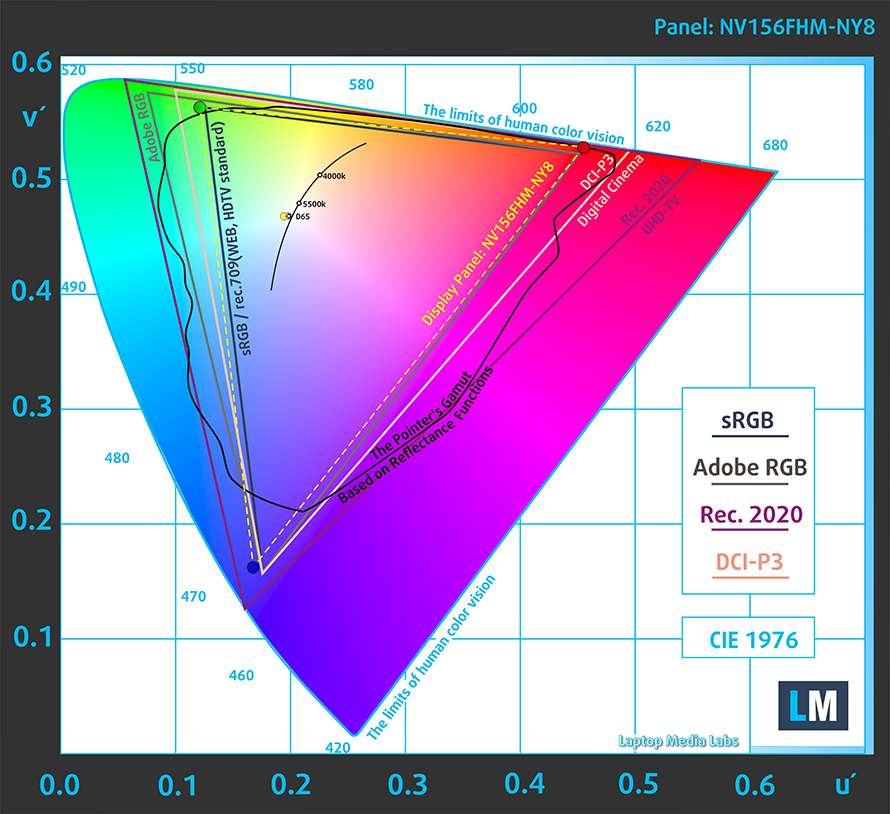
Our “Design and Gaming” profile delivers optimal color temperature (6500K) at 140 cd/m2 luminance and sRGB gamma mode.
We tested the accuracy of the display with 24 commonly used colors like light and dark human skin, blue sky, green grass, orange, etc. You can check out the results at factory condition and also, with the “Design and Gaming” profile.
Below you can compare the scores of Lenovo Legion 5 (15″ Intel, 2021) with the default settings (left), and with the “Gaming and Web design” profile (right).
The next figure shows how well the display is able to reproduce really dark parts of an image, which is essential when watching movies or playing games in low ambient light.
The left side of the image represents the display with stock settings, while the right one is with the “Gaming and Web Design” profile activated. On the horizontal axis, you will find the grayscale, and on the vertical axis – the luminance of the display. On the two graphs below you can easily check for yourself how your display handles the darkest nuances but keep in mind that this also depends on the settings of your current display, the calibration, the viewing angle, and the surrounding light conditions.
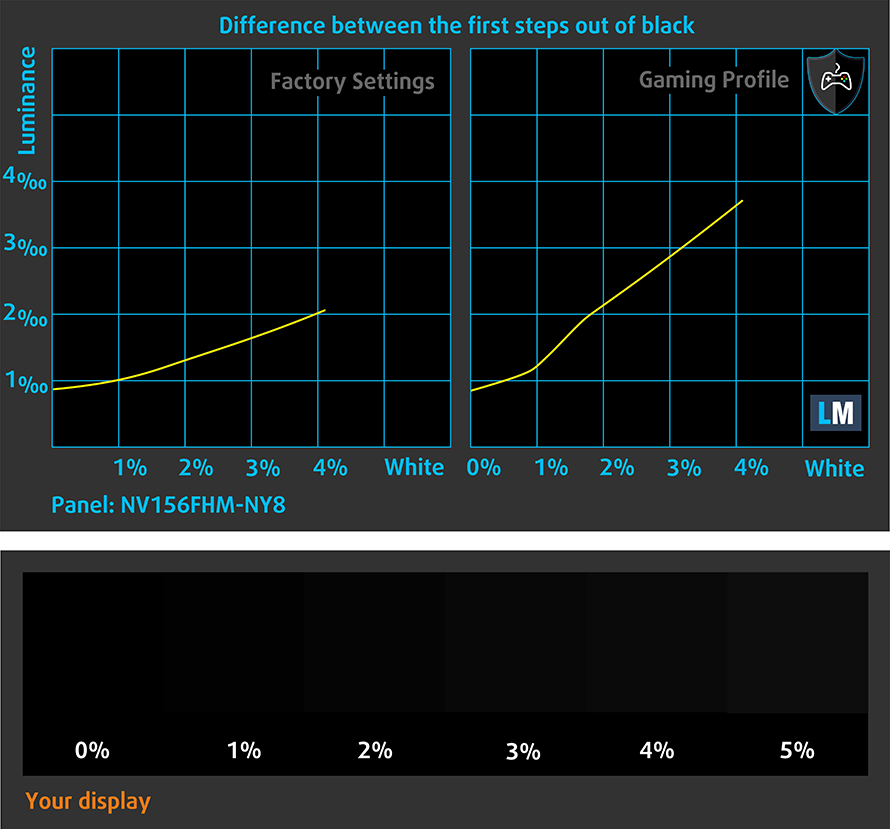
Response time (Gaming capabilities)
We test the reaction time of the pixels with the usual “black-to-white” and “white-to-black” method from 10% to 90% and vice versa.
We recorded Fall Time + Rise Time = 8 ms.
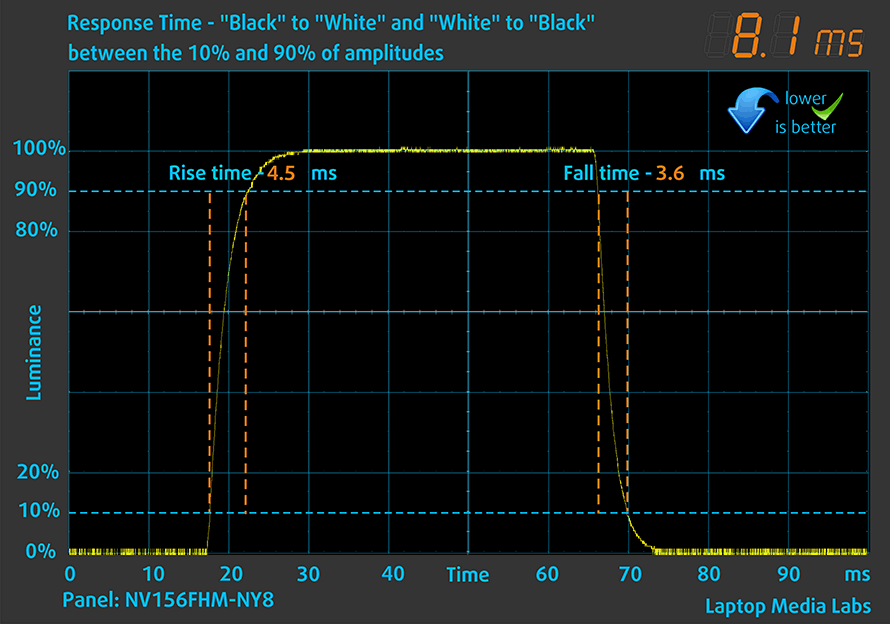
After that, we test the reaction time of the pixels with the usual “Gray-to-Gray” method from 50% White to 80% White and vice versa between 10% and 90% of the amplitude.
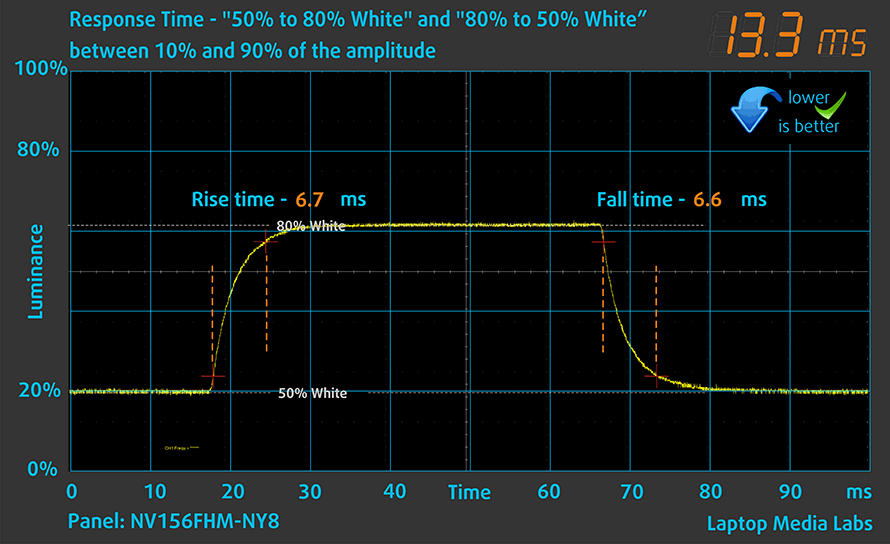
PWM (Screen flickering)
Pulse-width modulation (PWM) is an easy way to control monitor brightness. When you lower the brightness, the light intensity of the backlight is not lowered, but instead turned off and on by the electronics with a frequency indistinguishable to the human eye. In these light impulses, the light/no-light time ratio varies, while brightness remains unchanged, which is harmful to your eyes. You can read more about that in our dedicated article on PWM.
Lenovo Legion 5 (15″ Intel, 2021)’s display is a PWM-free unit. This provides comfort in extended periods of use. This will not impact negatively your health during prolonged periods of usage.
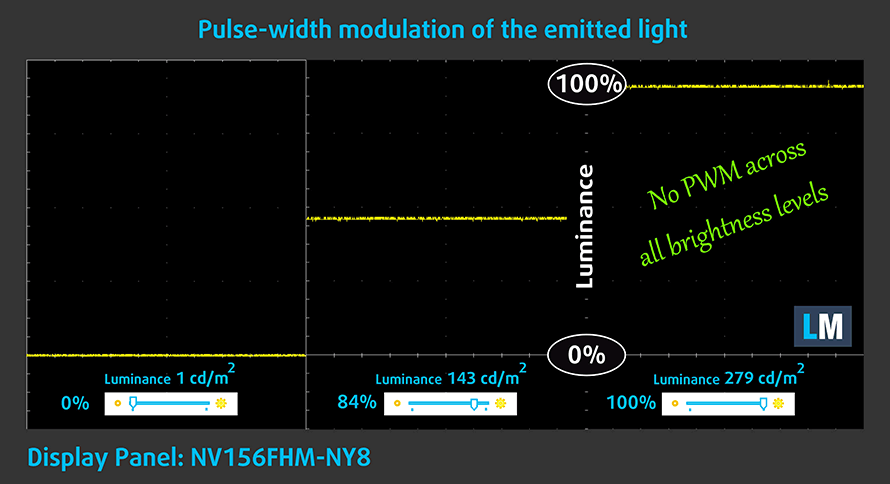
Blue light emissions
Installing our Health-Guard profile not only eliminates PWM but also reduces the harmful Blue Light emissions while keeping the colors of the screen perceptually accurate. If you’re not familiar with the Blue light, the TL;DR version is – emissions that negatively affect your eyes, skin, and your whole body. You can find more information about that in our dedicated article on Blue Light.
Buy our profiles
Since our profiles are tailored for each individual display model, this article and its respective profile package are meant for Lenovo Legion 5 (15″ Intel, 2021) configurations with 15.6″ FHD IPS BOE NV156FHM-NY8 (BOE0998).
*Should you have problems with downloading the purchased file, try using a different browser to open the link you’ll receive via e-mail. If the download target is a .php file instead of an archive, change the file extension to .zip or contact us at [email protected].
Read more about the profiles HERE.
In addition to receiving efficient and health-friendly profiles, by buying LaptopMedia's products you also support the development of our labs, where we test devices in order to produce the most objective reviews possible.

Office Work
Office Work should be used mostly by users who spend most of the time looking at pieces of text, tables or just surfing. This profile aims to deliver better distinctness and clarity by keeping a flat gamma curve (2.20), native color temperature and perceptually accurate colors.

Design and Gaming
This profile is aimed at designers who work with colors professionally, and for games and movies as well. Design and Gaming takes display panels to their limits, making them as accurate as possible in the sRGB IEC61966-2-1 standard for Web and HDTV, at white point D65.

Health-Guard
Health-Guard eliminates the harmful Pulse-Width Modulation (PWM) and reduces the negative Blue Light which affects our eyes and body. Since it’s custom tailored for every panel, it manages to keep the colors perceptually accurate. Health-Guard simulates paper so the pressure on the eyes is greatly reduced.
Get all 3 profiles with 33% discount
Sound
Lenovo Legion 5 (15″ Intel, 2021)’s speakers are characterized with a sound of good quality. However, the lows have some deviations from clarity but the mids, and highs are clear.
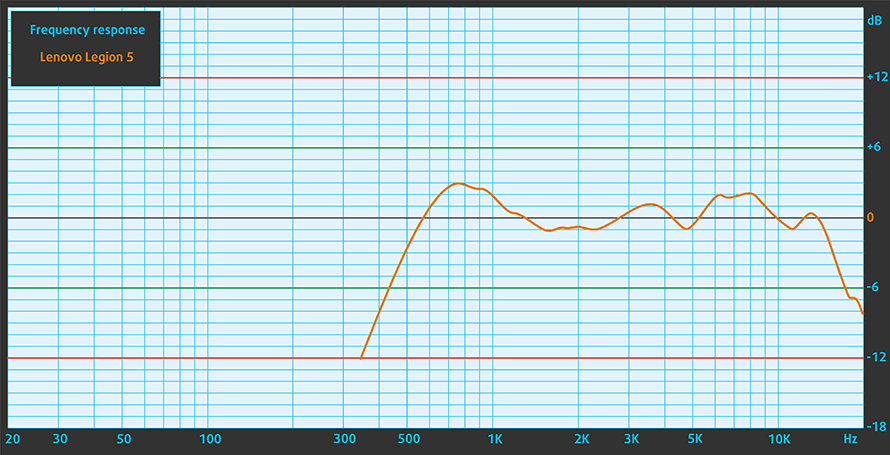
Drivers
All of the drivers and utilities from this notebook can be downloaded from here: https://pcsupport.lenovo.com/us/en/products/laptops-and-netbooks/legion-series/legion-5-15ith6h/downloads/automatic-driver-update
Battery
Now, we conduct the battery tests with Windows Better performance setting turned on, screen brightness adjusted to 120 nits, and all other programs turned off except for the one we are testing the notebook with. This notebook has a 60Wh battery that lasts for 6 hours and 15 minutes of Web browsing, and 4 hours and 46 minutes of video playback. This result is close to the score of the AMD version of this device.
In order to simulate real-life conditions, we used our own script for automatic web browsing through over 70 websites.

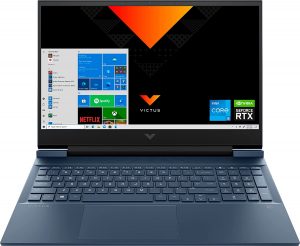
For every test like this, we use the same video in HD.


CPU options
This machine can be configured with a lot of Intel Tiger Lake H45 CPUs including the Core i5-11260H, Core i5-11400H, Core i7-11600H, and Core i7-11800H.
Storage performance
The laptop that we have bought comes with an NVMe drive with a model number SKHynix_HFS512G9DE9X084N. The measured bandwidth is ~ 530MB/s which is a decent result.
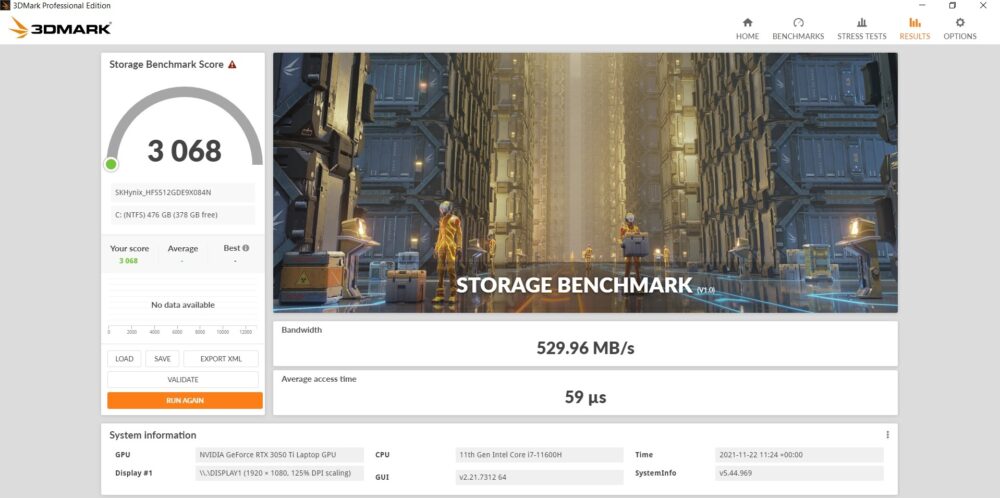
Results are from the Cinebench R23 CPU test (the higher the score, the better)
Results are from our Photoshop benchmark test (the lower the score, the better)
GPU options
The whole series is rich-in graphics card options – the base GPU is the good (and old) GeForce GTX 1650. Further down the road you can pick some new RTX Ampere-based variants – NVIDIA GeForce RTX 3050 (95W), GeForce RTX 3050 Ti (95W), GeForce RTX 3060 (130W), and GeForce RTX 3070 (130W).
Results are from the 3DMark: Time Spy (Graphics) benchmark (higher the score, the better)
Results are from the 3DMark: Fire Strike (Graphics) benchmark (higher the score, the better)
Results are from the Unigine Superposition benchmark (higher the score, the better)
Gaming tests (internal display)
| Assassin’s Creed Valhalla | Full HD, Low (Check settings) | Full HD, Medium (Check settings) | Full HD, High (Check settings) | Full HD, Ultra (Check settings) |
|---|---|---|---|---|
| Average FPS | 94 fps | 73 fps | 51 fps | 43 fps |
| Metro Exodus | Full HD, Low (Check settings) | Full HD, High (Check settings) | Full HD, Extreme (Check settings) |
|---|---|---|---|
| Average FPS | 113 fps | 52 fps | 25 fps |
| Gears 5 | Full HD, Low (Check settings) | Full HD, Medium (Check settings) | Full HD, High (Check settings) | Full HD, Ultra (Check settings) |
|---|---|---|---|---|
| Average FPS | 167 fps | 111 fps | 91 fps | 72 fps |
Temperatures and comfort
Max CPU load
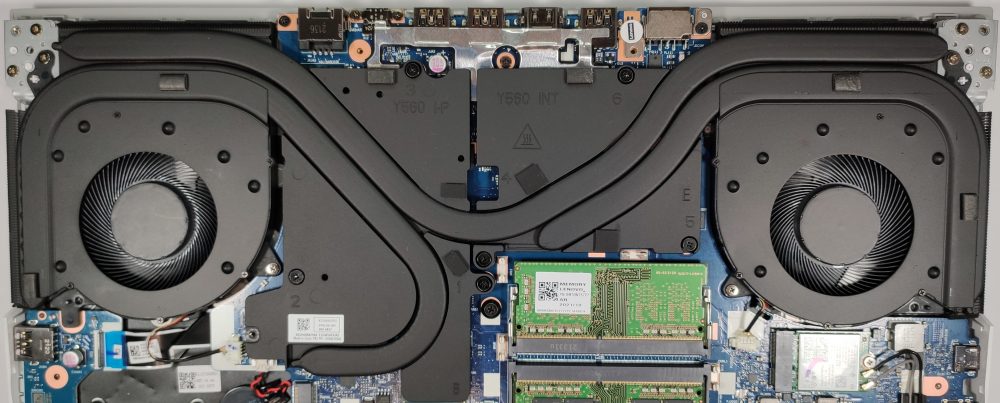
In this test we use 100% on the CPU cores, monitoring their frequencies and chip temperature. The first column shows a computer’s reaction to a short load (2-10 seconds), the second column simulates a serious task (between 15 and 30 seconds), and the third column is a good indicator of how good the laptop is for long loads such as video rendering.
Average core frequency (base frequency + X); CPU temp.
| Intel Core i7-11600H (45W TDP) | 0:02 – 0:10 sec | 0:15 – 0:30 sec | 10:00 – 15:00 min |
|---|---|---|---|
| Lenovo Legion 5 (15″ Intel, 2021) | 3.95 GHz @ 95°C @ 99W | 3.83 GHz @ 96°C @ 88W | 3.75 GHz @ 95°C @ 75W |
Our device is configured with an Intel Core i7-11600H which is a 6-core CPU with 12 threads. It’s easy to see that this Lenovo is tuned to favors high CPU clock over thermals. In short to medium stress scenarios, the processor is almost hitting the 4GHz mark with a temperature of around 95°C – 96°C. In longer loads, the laptop can still provide a super-high frequency of 3.75GHz while the thermals remain unchanged – 95°C. This leads to a snappy and fast device that has a hot CPU no matter what you’re doing.
Real-life gaming
| NVIDIA GeForce RTX 3050 Ti | GPU frequency/ Core temp (after 2 min) | GPU frequency/ Core temp (after 30 min) | GPU frequency/ Core temp (Max Fan) |
|---|---|---|---|
| Lenovo Legion 5 (15″ Intel, 2021) | 1998 MHz @ 73°C @ 94W | 1978 MHz @ 78°C @ 94W | – |
| Dell G15 5511 | 1882 MHz @ 71°C @ 88W | 1878 MHz @ 72°C @ 89W | – |
| Dell G15 5515 | 1857 MHz @ 76°C @ 80W | 1850 MHz @ 77°C @ 80W | – |
| Acer Nitro 5 (AN515-57) | 1616 MHz @ 70°C @ 66W | 1607 MHz @ 72°C @ 65W | 1632 MHz @ 69°C @ 66W |
| MSI Katana GF76 | 1619 MHz @ 76°C @ 60W | 1594 MHz @ 82°C @ 60W | 1632 MHz @ 70°C @ 60W |
On the positive side, the GPU thermals are just fine – 73°C in short stress and 78°C in prolonged gaming sessions. It’s great to see that the GeForce RTX 3050 Ti (95W) takes advantage of the big TGP and the decent cooling – 1978 MHz after 30 minutes of playing games is a great result.
Gaming comfort
Unlike the Pro variants, the Lenovo Legion 5 (15″ Intel, 2021) doesn’t feature a vapor chamber cooling. Although the thermal management looks decent enough, it has to deal with a CPU that reaches 3.75 GHz in longer loads and a 95W video card that almost touches the 2.0 GHz mark during gaming. Sure, it affects the performance positively, but the device isn’t silent at all. Well, it’s not “jet-loud”, it’s okay for playing without headphones but you’re going to hear the spinning fans all the time during gaming.
On the bright side, the palm rest area remains cool, while the WASD section isn’t too hot and it’ll not ruin your experience while playing your favorite game.
Verdict
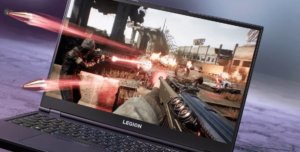 Overall, the Lenovo Legion 5 (15″ Intel, 2021) is a great allrounder and it offers a lot of bang for its money. The device has an all-plastic build that feels solid and rigid even when you try to twist it on purpose. Sure, the lid is a bit bendy but that fine for a plastic unit like this one.
Overall, the Lenovo Legion 5 (15″ Intel, 2021) is a great allrounder and it offers a lot of bang for its money. The device has an all-plastic build that feels solid and rigid even when you try to twist it on purpose. Sure, the lid is a bit bendy but that fine for a plastic unit like this one.
The backlit keyboard is great for both typing and gaming with its good travel and clicky feedback. Additionally, the touchpad is accurate and comfortable for everyday usage. No matter for what you’re going to use this machine, a NumPad and big Arrow keys are always a welcomed feature.
The MUX switch is doing its job well – after you disable the iGPU directly from the BIOS, it positively affects (and boosts) the GPU performance. In this case, you don’t need to connect an external display to extract the best possible performance out of the graphics card.
Our device comes with a 165Hz 1080p display with a model number BOE NV156FHM-NY8 (BOE0998). This is a great unit for gaming – it has 97% sRGB coverage, the response time is fast enough even for online shooters like Call Of Duty: Warzone, it’s PWM-free, and the display becomes very color-accurate with our Gaming and Web design profile. So, you can use it for color-sensitive work and make the device even more versatile. Keep in mind that the default 1080p panel has a 60Hz refresh rate, and the option that features the GeForce GTX 1650 loses the MUX switch.
Some words regarding the cooling solution. First of all, the CPU and the GPU have sky-high clocks no matter the load. This is great for all kinds of usage but the cooling is under stress constantly. Unfortunately, despite the high frequencies, the CPU always stays in the 95°C – 96°C zone even in short loads. That’s why the fans are working hard almost every time when you’re doing something a bit more CPU-heavy than Web browsing or watching videos. By the way, the “Ultra Quiet Mode” (that can be activated only through the BIOS) is a real-life-saver for some light casual daily tasks because the fans are much more relaxed in this scenario.
However, the GPU stays relatively cool and just like the CPU, it boosts high all the time (1978 MHz in longer stress). It’s amazing how much performance can be squeezed out of an RTX 3050 Ti thanks to the big TGP and the impressive core clocks.
The upgradability options are looking good, the two SODIMMs can handle up to 32GB of DDR4-3200MHz RAM in dual-channel mode, and we have two M.2 slots for fast NVMe drives.
Moreover, the I/O is a real gem with the three USB Type-A 3.2 (Gen. 1) ports, a Thunderbolt 4 (Type-C) port, and in addition, most of the ports are placed on the back of the laptop which is good for better cable management.
The device has its drawbacks – there is no SD card slot, the display (BOE NV156FHM-NY8 (BOE0998)) has high luminance nonuniformity, and we observed some slight flexes on the right side of the base below the Arrow keys.
However, the Lenovo Legion 5 (15″ Intel, 2021) is a strong package for gamers, it has a good 165Hz display with fast response times, a good keyboard, and it can be configured with fast Intel Tiger Lake H45 CPUs as well as some NVIDIA Ampere GPUs with hefty TGP values. When you add the great upgradability options in the mix and the sky-high boosting CPU and GPU, this Lenovo machine is a great all-rounder that offers fast performance in games and in productivity as well (especially if choose an 8-core processor).
You can check the prices and configurations in our Specs System: https://laptopmedia.com/series/lenovo-legion-5i-15-2021/
Pros
- High TGP GPUs
- 2x M.2 PCIe slots, 2x RAM SODIMM slots in dual channel, Wi-Fi 6
- Covers 97% of the sRGB color gamut and has accurate color representation with our Gaming and Web design profile (BOE NV156FHM-NY8 (BOE0998))
- Fast panel with quick response times (BOE NV156FHM-NY8 (BOE0998))
- Rich I/O
- Great input devices
- Competitive price
- MUX switch (except for GTX 1650 models)
Cons
- No SD card
- High luminance nonuniformity (BOE NV156FHM-NY8 (BOE0998))


